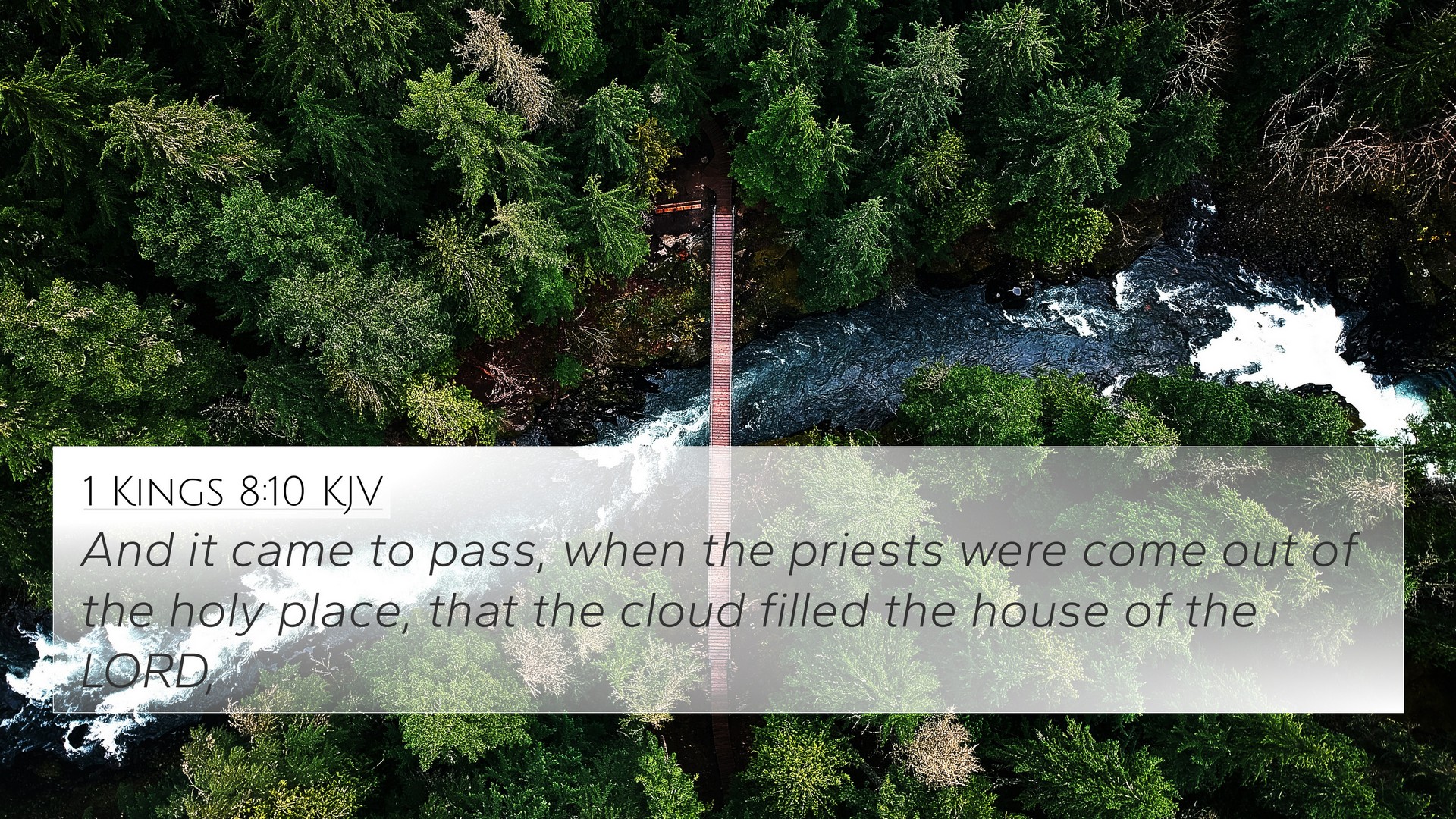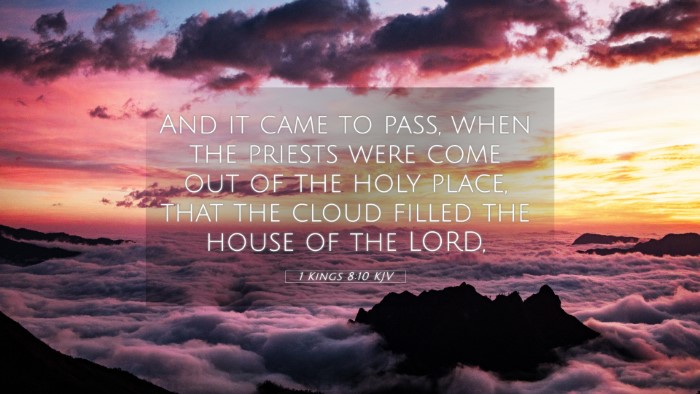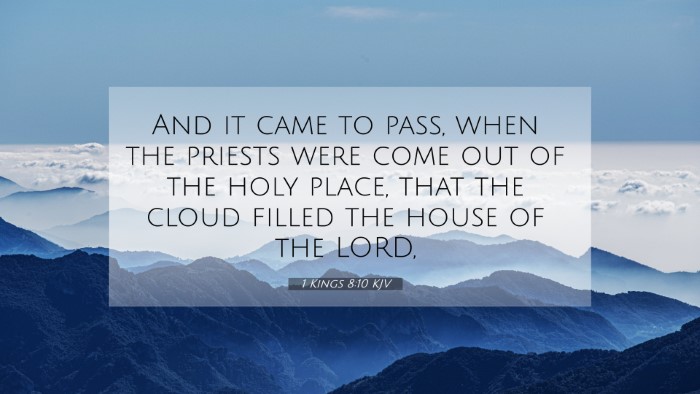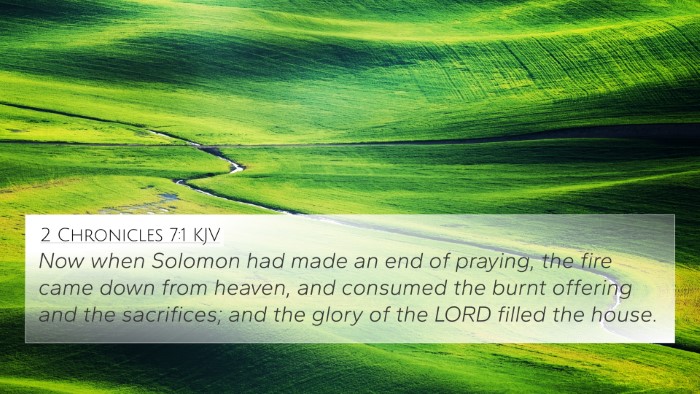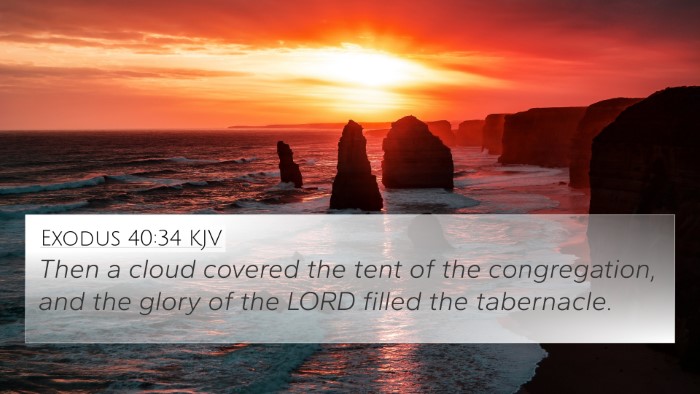Understanding 1 Kings 8:10
The verse 1 Kings 8:10 describes a significant moment in the dedication of the temple built by King Solomon. It captures the essence of God's glory descending upon the newly constructed temple, indicating His presence and approval of this sacred place.
Verse Context
This passage follows the completion of Solomon's Temple, which symbolizes the fulfillment of God's promise to dwell among His people. The verse states:
"And it came to pass, when the priests were come out of the holy place, that the cloud filled the house of the Lord."
Combined Insights from Public Domain Commentaries
- Matthew Henry: Henry emphasizes the miraculous nature of God's presence in the Temple. He notes that the cloud represents the divine glory, an answer to Solomon's prayer, and signifies God's approval upon Solomon's work.
- Albert Barnes: Barnes connects this event with previous instances of God's glory manifesting in the Old Testament, highlighting the continuity of God's presence with His people. He asserts that this cloud illustrates both God's mercy and majesty, reassuring believers of His nearness.
- Adam Clarke: Clarke mentions that the descending cloud symbolized both judgment and grace, suggesting that while God is a consuming fire, He encompasses His people in mercy. He provides a thorough analysis of how this event fulfilled ancient prophecies concerning the location of divine worship.
Theological Implications
This verse encapsulates key theological themes such as:
- The Immanence of God: God's willingness to dwell among His people highlights His desire for intimacy with humanity.
- The Holiness of God: The cloud serves as a reminder of God's holiness and His unapproachable nature, necessitating reverence.
- Divine Approval: The cloud's appearance was a sign of God's blessing on Solomon's temple and ministry.
Cross-References
1 Kings 8:10 can be understood in relation to several other scripture passages:
- Exodus 40:34-35: The cloud also filled the tabernacle, signifying God's presence with Israel during their wilderness journey.
- 2 Chronicles 5:13-14: A parallel account of the temple's dedication, where God's glory manifests during the worship.
- Isaiah 6:1-6: Isaiah’s vision of the Lord in the temple reveals the overwhelming presence of God, similar to the cloud encountered by Solomon.
- Matthew 17:5: The New Testament connection with the transfiguration of Christ, where God’s voice affirms Jesus, mirroring God’s declaration at the temple's dedication.
- Hebrews 9:3-4: Discusses the significance of the Holy of Holies, paralleling the sacredness of the temple and the cloud as a divine presence.
- 1 Corinthians 3:16: The idea of the believer's body as the temple of God, linking the New Testament's understanding of divine dwelling.
- Revelation 21:3: Envisions the ultimate fulfillment of God's dwelling among His people in the new heaven and new earth, connecting to the theme of God's eternal presence.
Conclusion
1 Kings 8:10 serves as a pivotal verse in the narrative of the Old Testament, showcasing God's desire to dwell with humanity, His holiness, and the establishment of worship centered in His presence. This text acts as a cornerstone for understanding the greater biblical narrative of God’s interactions with His people, inviting believers to consider the astonishing depth of connection throughout scripture.
SEO Keywords
This analysis incorporates critical Bible verse cross-references and highlights the connections between Bible verses, encouraging a deeper understanding through cross-referencing Biblical texts. For those studying scripture, tools for Bible cross-referencing are essential in uncovering the Bible verses that relate to each other. Proper Bible reference resources enrich the study of comprehensive Bible cross-reference materials for a more engaging cross-reference Bible study.
